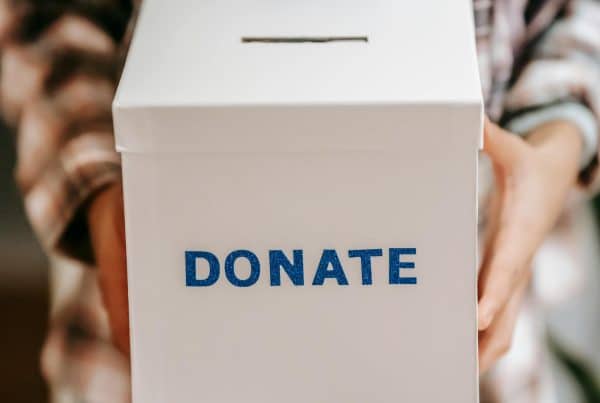By Jeremiah Mosteller, Criminal Justice Reform Policy Liaison
Successful reentry programs give former offenders opportunities to support themselves through legitimate and productive work, reducing recidivism and improving public safety.
Reentry and Public Safety
American prisons and jails hold over 2.1 million individuals at any given time and almost every one of these individuals will return to their community once they have been found innocent or complete the sentence imposed for their unlawful conduct. This amounts to 10 million individuals returning home to their communities from state and federal prisons and local jails each year. For our justice system to succeed in achieving its goal of increased public safety, it must take steps to ensure that these individuals are able to become successful and contributing members of their community.
“Reentry” is the term used to describe the process of releasing individuals from prisons and jails back into their community. This process can take three different forms based on the sentence imposed by a judge, the resources of a local community, and the person’s willingness to voluntarily take additional steps to ensure their future success.
Types of Reentry
The first type of reentry involves formal government supervision and support upon release, through probation or parole. In 2016, there were 4.5 million Americans under some form of community supervision. These individuals are actively supervised and supported by a probation or parole officer and subject to a list of conditions imposed by a court or the corrections system. The second form of reentry involves an individual voluntarily accepting or seeking admittance to government and community-based programs that will prepare them for reentry and provide them with support services when they return to their communities. Various forms of reentry programs have been found to be an effective tool at reducing future crime and ensuring people become contributing members of their community after paying their debt to society. Lastly, an individual can be released without any government supervision or community program support through the reentry process.
Keys to Successful Reentry
Years of research have revealed the key barriers that inhibit someone’s ability to be successful upon reentry, and that the process of reentry should begin at day one of incarceration. While an individual is incarcerated, correctional staff and facility programs should strive to help the individual acquire a pro-social worldview and positive community relationships, and overcome any existing substance abuse or mental health concerns. Once an individual reenters society, their likelihood of becoming a contributing member of their community is dependent on whether they can secure meaningful employment, find a place to live, and have the education and skills necessary to advance in life. A successful reentry program is one which helps individuals overcome one or more of these barriers and collaborates with other community resources to supplement its own program with other services.
Community Solutions Attempting to Improve Reentry
Across the country today, there are hundreds of organizations seeking to equip those returning from prison with the skills, character, and practical knowledge necessary to be successful upon reintegration into their community. The types of reentry programs that currently exist are almost as varied as the individuals utilizing their services. Some are more comprehensive, like the Oasis Center in Dallas, providing mentorship, housing placement, family relationship training, workforce development, employment placement, and financial literacy classes. Others are more specialized, such as Root and Rebound, which provides legal services and legal education to those in prison and returning to communities across California. They may provide services to individuals seeking to work in a variety of industries or focus their efforts in training those in prison for a specific industry. The programs can be provided while someone is in prison or after someone has left the prison walls. No matter the format or structure of the organization’s program, they are all attempting to increase public safety and ensure second chances for those reentering our society.
Effective Reentry Programs
While research has clearly revealed that the barriers discussed above result in higher recidivism and hinder successful reentry, not much is known about a sustainable model of elements necessary for reentry programs to significantly impact our 83 percent national recidivism for the long-term. Most of the current research available highlights specific programs and their impact standing alone.
For example, the University of Nevada, Las Vegas has studied one reentry program in their local community to discover whether it results in increased employment and reduced recidivism. Hope for Prisoners is an 18-month reentry program that provides pre-vocational programming, job placement, and mentoring. The program’s unique strength is its relationship with local law enforcement, with many of its program mentors being members of the Las Vegas Metropolitan Police Department. The study found that 64 percent of participants found stable employment post-graduation from the program and only 6 percent were re-incarcerated within 18 months, compared to the standard results of 44 percent (national estimate) and 46 percent (Utah) respectively.
Another community-based reentry program that has been found to be highly effective is the Prison Entrepreneurship Program. While a participant of this program is incarcerated, he receives a “mini-MBA” which includes character, leadership, and business curriculum. Upon release, the program provides transitional housing, employment assistance, counseling, and other support services. Since its inception, the program has had 1,300 graduates with more than 200 starting a business upon release. The program has a three-year recidivism rate of 7 percent, 100 percent of its graduates are employed within 90 days of release from prison, and 41 percent of its graduates earn a salary of more than $52,000 a year.
Research results of these two completely different programs speak volumes about the significant contributions they are having to public safety and economic growth in their communities. Other community-based reentry organizations across the country that have been shown to reduce recidivism include the Safer Foundation in Chicago, New Jersey Reentry Corporation, and the Center for Employment Opportunities (CEO).
Safe Streets & Second Chances Initiative
Realizing the gap in research around reentry and the need for a comprehensive strategy for reentry activities that can be implemented in any community across the country, the Safe Streets & Second Chances Initiative was born. Safe Streets & Second Chances is a partnership between the Texas Public Policy Foundation, the Charles Koch Foundation, Koch Industries, and a group of researchers led by Professor Carrie Pettus-Davis of Florida State University. This initiative seeks to utilize an “evidence-driven approach” that will utilize “academic research to craft individualized reentry plans” which will help participants improve themselves while showing they are “capable of redemption.” Its work is based on the Five Key Model for Reentry developed by Professor Pettus-Davis and focuses on developing healthy thinking patterns, finding occupational balance, building positive coping strategies, enjoying positive social activities, and ensuring strong interpersonal relationships. Initial findings from the research show that individuals in prison are eager to secure a second chance and emotionally capable of successful reentry. The results revealed that these individuals want to work, gain knowledge and education, build stronger personal relationships, improve their health, and practice their faith more than they can in our current prison system.
Conclusion
America is faced with a reality where four out of every five individuals who leave prison will return at some point in the future. Having an effective reentry process that allows and incentivizes those leaving prison to become contributing members of society is essential for public safety. Hundreds of community organizations across the country are seeking to tackle this problem utilizing a variety of methods. Some of these organizations, like Hope for Prisoners, have been found to be effective at helping these individuals secure meaningful employment and stay on the path to a better life. While we know the barriers which bar someone from successful reentry and a true second chance, a standard evidence-based model for successful reentry does not exist. The Safe Street Second Chances Initiative may be the key to reversing our abysmal recidivism rate and discovering the key to success






